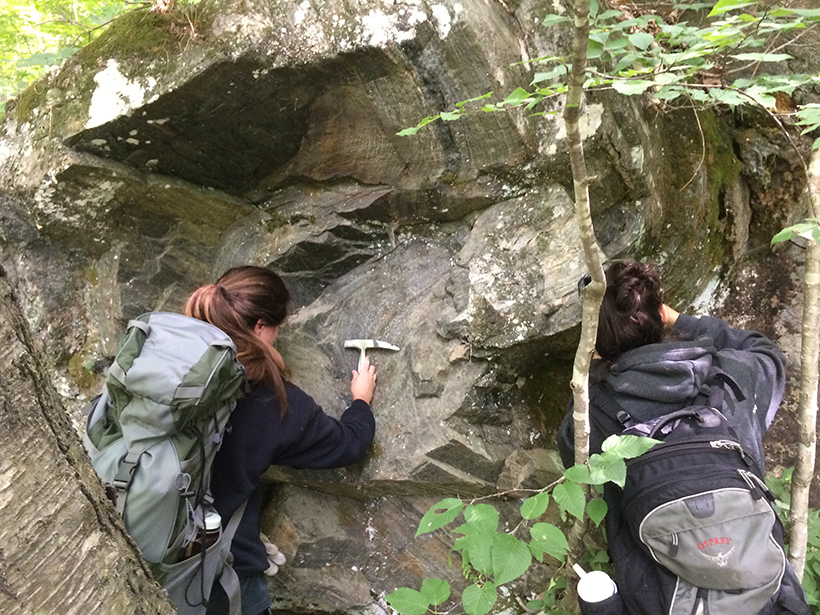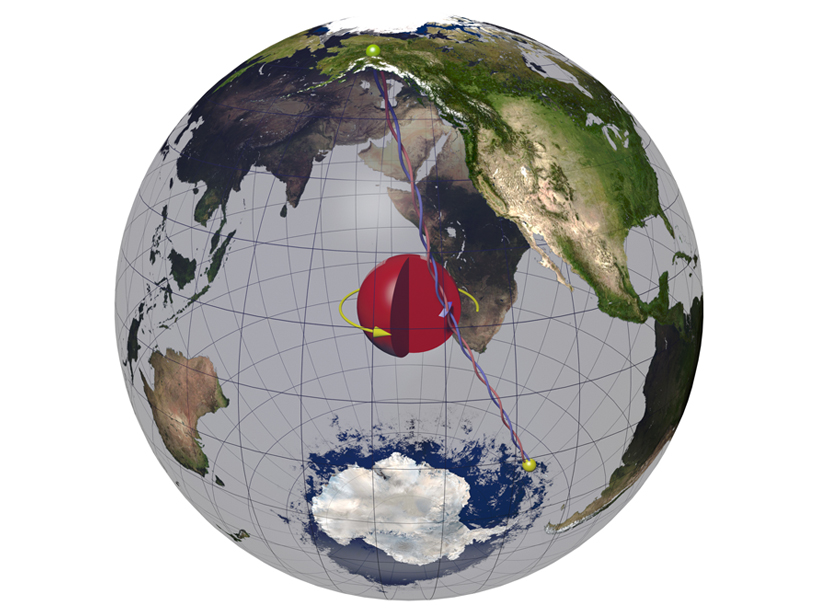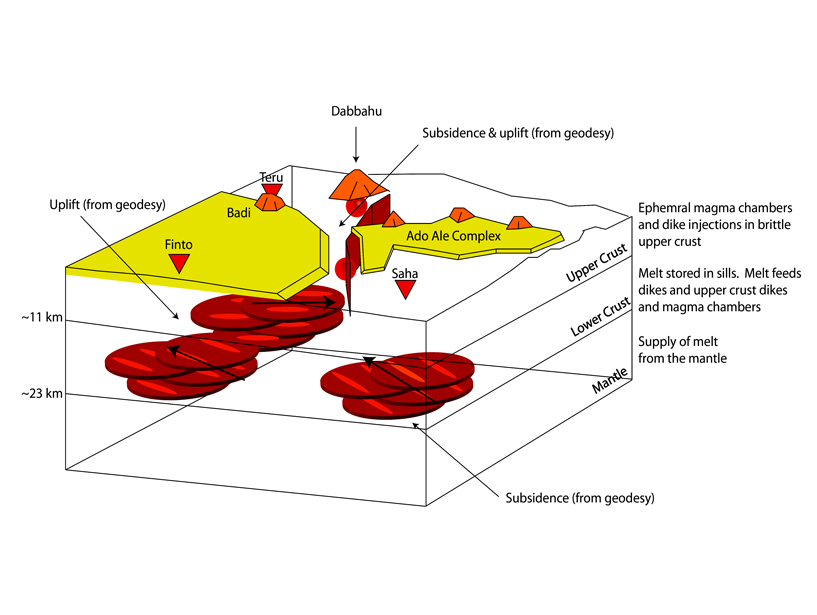Investigating the role of layered rocks and compositional banding on mineral scale in generating seismic anisotropy in the mantle.
anisotropy
Posted inResearch Spotlights
Widespread Mantle Upwelling Beneath Oceanic Transform Faults
A global characterization of mantle flow patterns beneath active oceanic transforms suggests pervasive upwelling stabilizes divergent plate boundaries by warming and weakening these enigmatic features.
Posted inResearch Spotlights
Measuring Earth’s Elasticity
A new study illuminates how crustal rocks break and stretch.
Posted inResearch Spotlights
Mapping the Movement of Energy Under Japan
New research on the energy waves caused by earthquakes provides the most detailed map to date of the subduction zone beneath Japan.
Posted inResearch Spotlights
The Enigmatic Core Properties of the Inner Earth
A new study explores the possibility of cubic iron alloy structure at our planet's core.
Posted inResearch Spotlights
A Modified Technique to Remotely Detect Subsurface Melt
Adapting a much-used analytical method to consider anisotropy opens up the approach to new uses.






